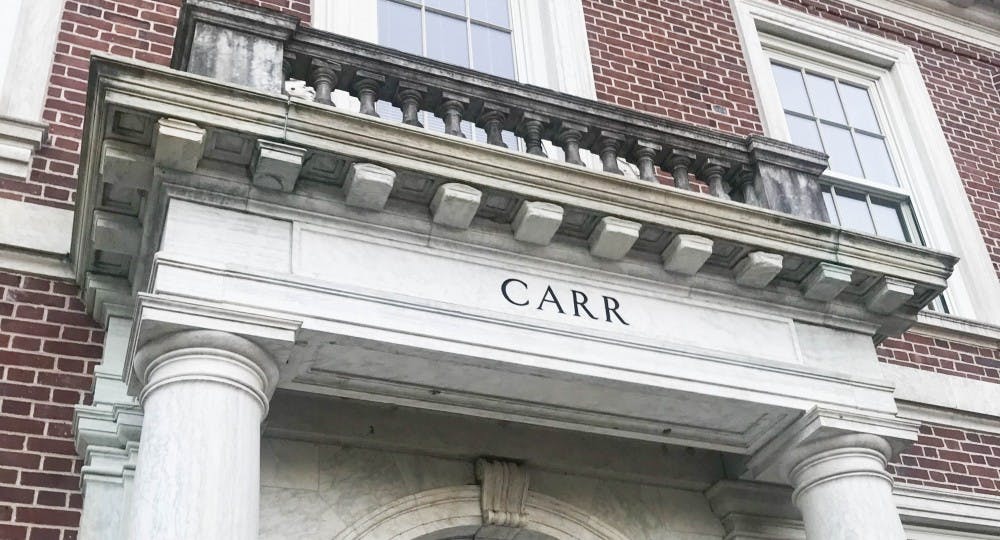The University released the text of the history department’s request to rename the Carr Building on East Campus Friday afternoon.
"Our monuments and institutional landscapes, we believe, should be a reflection of our values as a community and as an institution," the proposal states. "Julian Carr’s life and legacy certainly do not reflect these values today."
Last semester, the department voted unanimously to make the proposal to the Board of Trustees and officially submitted their proposal Aug. 24, 2018.
The proposal will go through a process that was created by President Vincent Price’s Commission on Memory and History last year after the removal of the Robert E. Lee statue from the Chapel steps. It will be given to an ad-hoc committee for review, and the committee will be asked to return a recommendation to the Price by the end of the Fall semester. Then, Price will have the option to change or maintain that proposal before presenting it to the Board of Trustees for their approval.
The text of the proposal digs into the history of Carr's involvement with Trinity College and the reasoning behind their recommendation to rename the building after Raymond Gavins, who was the first African-American history professor at Duke and who died in 2016.
The building was constructed in 1927, the proposal said, and was originally named the Classroom Building. It was relabeled to honor Julian Carr in 1930 "in recognition of his earlier institutional role in support of Trinity College."
"Carr’s selection for commemoration, however, was already problematic at the time, since unlike most others on the list of those approved for commemoration by the Board of Trustees that year, Carr’s influence was exclusively financial and had ended decades earlier before the transformation of the college into Duke University," the proposal states.
The history department noted that Carr was a benefactor to Trinity College, donating the modern-day East Campus, but added that was Carr’s “last significant involvement” with Trinity.
“Carr’s commitment to forms of historical distortion that supported his white supremacist politics make it particularly inappropriate for his name to be honored in the building occupied by the university’s Department of History," the proposal says.
The name of the building is at odds with what occurs inside of it, the history department stated in its proposal.
“In 2018, in the wake of decades of intensive and ongoing struggle within our institution and society at large to undo the effects of that political project, the presence of his name is not appropriate, as it quite literally conflicts with the work of education that goes on in the building on a daily basis," it reads.
The department then outlined what it intends to do if the request is successful.
“If the change of the name is approved, as a department we hope to use this as an opportunity for further educational work through a symposium, thematic classes and workshops, and perhaps the creation of a plaque inside the building narrating the history of its renaming, so that both the past name and present name are understood as part of a broader historical process," the petition states.
The full text of the proposal can be found here.
Get The Chronicle straight to your inbox
Sign up for our weekly newsletter. Cancel at any time.
Bre is a senior political science major from South Carolina, and she is the current video editor, special projects editor and recruitment chair for The Chronicle. She is also an associate photography editor and an investigations editor. Previously, she was the editor-in-chief and local and national news department head.
Twitter: @brebradham
Email: breanna.bradham@duke.edu

